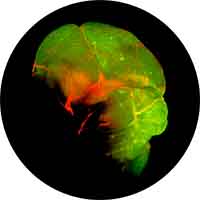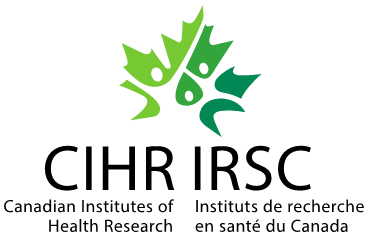
Dr. Valerie Wallace
“We're interested in the molecular pathways governing brain tumor initiation and eye development, as well as cell-based retina repair.”
Research Overview
Over the past decade, we have built on original work describing Hedgehog (Hh) signaling in progenitor maintenance and optic nerve development in the eye. We’ve extended that interest to include Hh-driven cancers and are currently studying how Hh target genes contribute to tumor initiation in pediatric brain tumors called medulloblastomas.
We’re also investigating cell-based therapies to restore vision loss in blinding eye diseases.
As part of this initiative, we developed the first mouse reporter line with cone photoreceptors tagged with Green Fluorescent Protein (GFP).
Using cone-GFP mice, we were the first to report that transplantation of GFP-tagged cones into recipient eyes resulted in GFP-positive recipient cells due to an exchange of materials between the transplanted and recipient cells. We’re now actively working to identify the mechanism of transfer.
Cell-based Retina Repair & Material Exchange
We developed a platform to investigate cone photoreceptor transplantation for retina repair. To do this, we developed the first mouse reporter line with cone photoreceptors that continuously express Green Fluorescent Protein (GFP). We then isolated GFP-positive cones for gene expression analysis, in vitro culture, and in vivo grafting.
When we grafted GFP-positive cones into recipient retinas, host cells with a non-cone morphology also became GFP-positive. We hypothesized that this was caused by an exchange of cellular content between donor and host cells. In fact, our latest research indicates that there is a transfer of GFP between cells, although the exact mechanism of this transfer remains unknown.

Hedgehog Signalling

Hedgehog (Hh) is a signalling protein that plays an important role in the development of the central nervous system in vertebrates. We were the first to show that neuron to progenitor cell communication mediated by Hh is involved in both the developing retina and cerebellum.
We demonstrated that Hh signaling from early-born neurons in the inner layers of the retina is required for the maintenance of progenitor cells during retinal development and for the proper organization of the retina’s cell layers. Similarly, we also found that Hh signalling from early-born neurons in the cerebellum is required for proper cerebellar organization and development.
Medulloblastoma Initiation

Medulloblastomas are the most common pediatric brain tumors, but they are difficult to study because patient biopsies only represent late stages of the disease. Using a mouse model, we’re studying the early stages of this cerebellar tumor.
We focuse on the relationship between pre-tumor cells and their environment, i.e. how Hedgehog target genes control signaling in pre-tumor cells and contribute to tumor initiation.
Recently, we showed for the first time that loss of Ndp/Frizzled4 signalling in surrounding cells creates a tumor-permissive environment during the early stages of tumor formation in the developing cerebellum.
Funding and Affiliations










